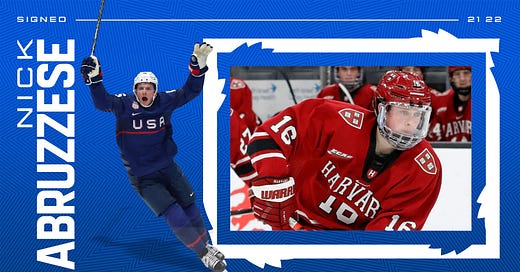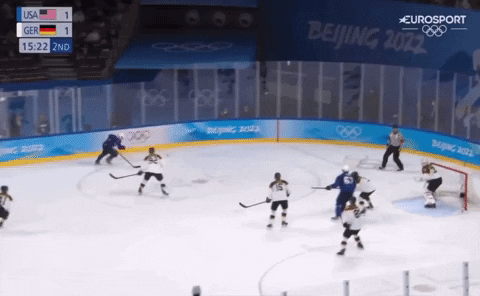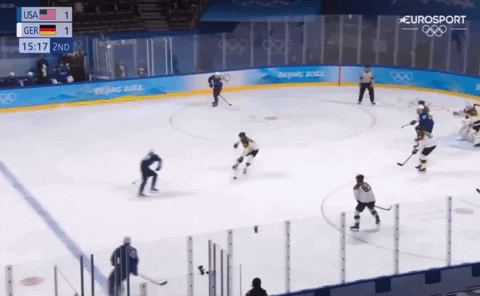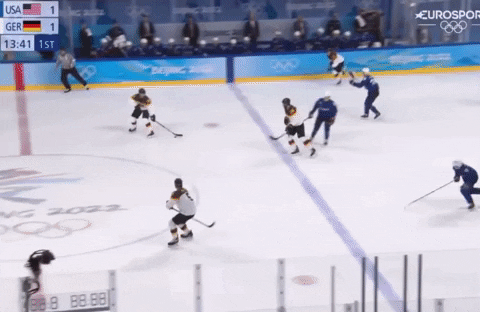Happy Saturday! We have a special release today due to a special player making his NHL debut tonight. No worries, tomorrow morning will still be our normal newsletter. We will dive deeper into how to make opponents look like traffic cones.
The Toronto Maple Leafs’ Nick Abruzzese will be making his NHL debut at age 22 tonight (4/2/2022) against the Philadelphia Flyers.
He’s a player everyone should know about.
5’10” and 170lbs. Part of his nickname, the bull shark, is due to his smaller frame.
Played juniors starting at age 18 (Chicago Steel)
Drafted in the 4th round at age 20 (Then went to Harvard)
Olympics for Team USA at age 22
In short, a late physical developer who has a passion for improving.
Learning and flying around like McDavid is unattainable for even NHLers. Learning details of the game from players that study and passionately grow their skills is much more attainable. These are the best players to learn from.
He is #16 in the below clips, referred to as NA16.
Details of a Hockey Game
Those players who have a passion for improving stick out like a sore thumb to those who have an eye for the game. Why? They pick up on all the details.
Here is what former Maple Leaf scout and current associate Chicago Steel GM Noelle Needham had to say:


Former Chicago Steel GM Ryan Hardy said, “Extremely intelligent. Extremely cerebral.”
How to best pick up these details? Study film and add them up in practice.
Practice Habits
During a game players barely touch the puck. In practice, players touch the puck a ton and have many more reps. This is the time that players really need to key in on and make the most of. Most really don’t. Abruzzese is completely locked in and getting the most out of his practices.
"I think he was always a very smart player and passionate about his hockey, but he was always small, and I don't know that anybody ever viewed him as an elite player until he got here.
"He worked on so many parts of his game. Some guys watch their game film on their own, in addition to what they do with coaches. He actually would watch and analyze his reps in practice.
"He always forced himself to make every drill game-like. Even in basic, nothing shooting drills, he would shoulder check pretending he had linemates with him. He was always thinking and creating to train his mind for the game. What a gift it was to have him.'' - Ryan Hardy (Link to source article)
As Kobe Bryant said, “It's not about the number of hours you practice, it's about the number of hours your mind is present during the practice.”
Abruzzese’ s 1 hour of practice is probably equivalent to 5 hours of a typical player’s practice time. He is squeezing more juice out of the time spent developing his game.
If this sounds familiar, it’s because Abruzzese approaches the game similar to former Hockey IQ Podcast guest Martin St Louis.
Working for teammates
The bull shark is a player who is unselfish and works for his teammates. Friend of the newsletter, Drew Carlson summarized this perfectly.

In simple terms, he is doing improv hockey by scanning, reading off teammates, and making a great play given the situation.

Here NA16 reads that his role is support the zone entry. He passes/kicks the puck to his outside teammate and continues his movement with his stick presented for a pass.
The key was his scanning to understand how the play was unfolding. The moment the area pass left his teammates’ stick, NA16 was scanning toward the right side of his body. It was a quick one, here is the still frame.
Related: Scanning in Hockey Series
Passing Prowess
"Nick's super skilled, very competitive and he's one of these guys that passes the puck almost always at the right time" - Harvard coach Ted Donato
Passing at the correct time is playing chess not checkers. Watch the defender… NA16 threatens with speed and when the defender commits to him, NA16 makes the pass wide to a teammate. The defender almost fell over trying to pivot! Again he finishes his route and creates for himself and teammates.
Using the net
The net is an obstacle for defensive opponents to work around and therefore makes a great place for players to work off of to find and create space to generate offense. The Leafs already use it a ton so Abruzzese should easily find his way within their offensive schemes.
Here is a great assist from the Olympics. To start we see NA16 start on the weakside of the net in wide open space. He is able to grab the puck and draw in defenders before passing.
After he makes the pass he doesn’t stay put, he continue to hunt and funnels towards the net. He gains inside positioning, is able to grab the rebound, and circle around the net for an assist to fellow Leaf prospect Matthew Knies.
Funneling to the Net
This is the detail of NA16’s game that really shows off the bull shark attribute the best. He constantly is swimming around the net to pick up loose pucks.
Where he shines specifically over many other players is the effort he puts in away from the puck to gain inside positioning early and have access to these “tap-in” type goals. Similar to last clip, but this time he scores the goal.
Stick Detail
One detail that the NHL is amazing at that most people take for granted is stick detail. I know what you’re thinking… Greg, what does that even mean?
Stick detail means having you stick in the correct lanes, using it effectively to knock away pucks, or using it to influence the direction of play.
This is a large way that smaller players can be extremely effective away from the puck and control the game. And, every once in a while turnovers that lead to goals
In this clip, we see NA16 (1) lead stick-on-puck, (2) position his stick to influence/force the play toward traffic, and (3) cut off the middle of the ice to the point the opposition circles back. Well done!
These are just some of the details that make the bull shark small, but mighty. While he may be a season in the AHL or so away from full-time NHL duty (Leafs tight cap situation may help him be there sooner), His detailed play, student mentality, and relentless desire will have him in the NHL for a long time to come.
For those inclined to ask what the Chicago Steel focus on when developing their players - Focus on scanning to identify cues, asking players questions rather than instructing, talking about cues instead of results, video work, technique work, etc.
Further reading










